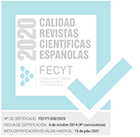Bioindicators and bioclimatic data as essential tools towards a consistent biogeographic district typology of Sierra Nevada National Park (Spain)
Keywords:
Bioclimatology, Aridic Index, Biogeography, Districts, Frigid Territory
Abstract
The relationship, through the application of robust and solvent bioclimatic indexes, between the characteristics of the natural environment (geology, orography, climate, et.) and the recognition of species, communities and vegetation series, has made it possible to establish in the Sierra Nevada National Park (Spain) a total of 8 homogeneous spaces (districts), included in other larger spaces (5 sectors, 2 provinces), which constitute the biogeographic typology of the territory. The consideration, inter alia, of historical climatic changes and human action show the necessary use of phytosociological methodology in the characterization of species, communities and vegetation series. The application of the Aridic Index and the positive temperature, in the bioclimatic context, explains the generalized aridity in the territory and the apparent contradiction of spaces with dry and semiarid ombroclima in the highest summits. The recognition of homogeneous territories (districts), is an essential tool for the management of the National Park.Downloads
Download data is not yet available.
Published
2017-06-29
How to Cite
Marfil J. M., Molero J., Cantó P. y Rivas-Martínez S. (2017). Bioindicators and bioclimatic data as essential tools towards a consistent biogeographic district typology of Sierra Nevada National Park (Spain). Lazaroa, 38(1), 7-25. https://doi.org/10.5209/LAZA.55439
Issue
Section
Articles
License
Lazaroa is an open access journal to promote global exchange knowledge. It facilitates unrestricted access to its contents from the moment of publication in its electronic edition. The originals published are property of the Universidad Complutense and it is mandatory to cite such source in case of total or partial reproduction. All contents are distributed under a Creative Commons License 4.0 (CC BY 4.0). This circumstance must be expressly stated in this way when necessary. You can check the informative version and legal text of the license.
Lazaroa does not charge for download or publishing any article.








